24-26 October 1997 Winter Storm
General Storm Evolution | Daily Highlights | Location of Heavy Snow Areas
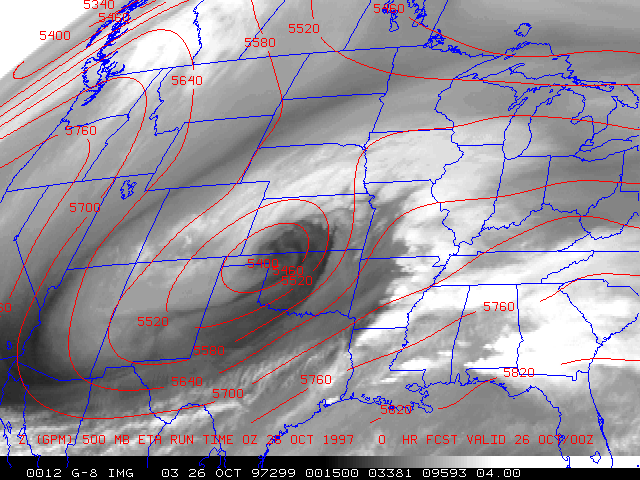
|
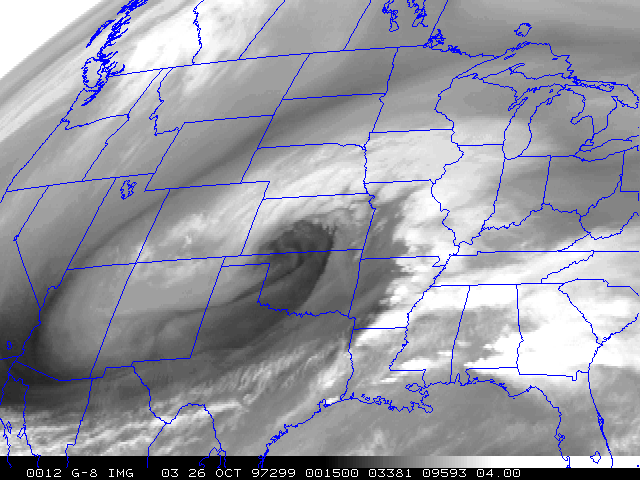
|
General Storm Evolution | Daily Highlights | Location of Heavy Snow Areas

|

|
Friday 24 October 1997
Another leading shortwave trough ahead of the main system was moving across Nebraska late in the day, giving that area their initial round of heavy snow.
Visible image Java animation (courtesy of the Storm Prediction Center)
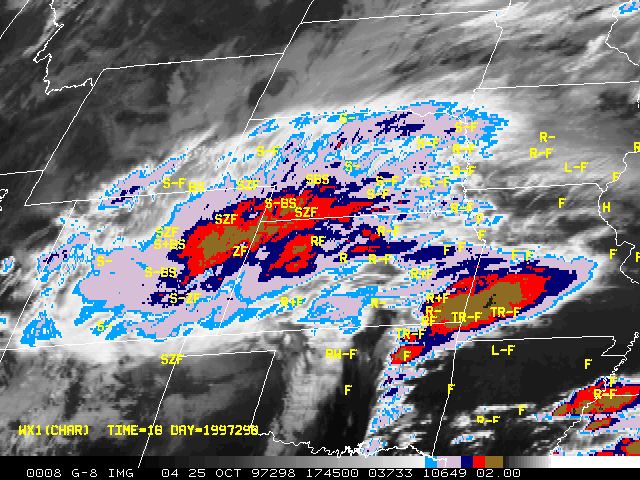
25 Oct GOES-8 IR (CC curve) |

26 Oct GOES-8 IR (CC curve) |
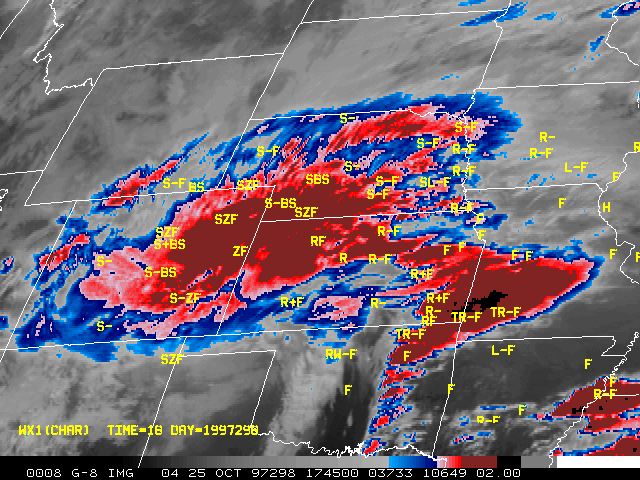
25 Oct GOES-8 IR (CE curve) |
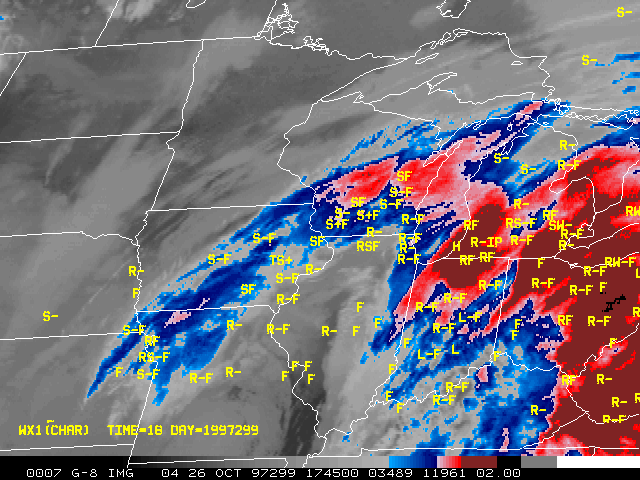
26 Oct GOES-8 IR (CE curve) |

25 Oct GOES-8 IR (DD curve) |
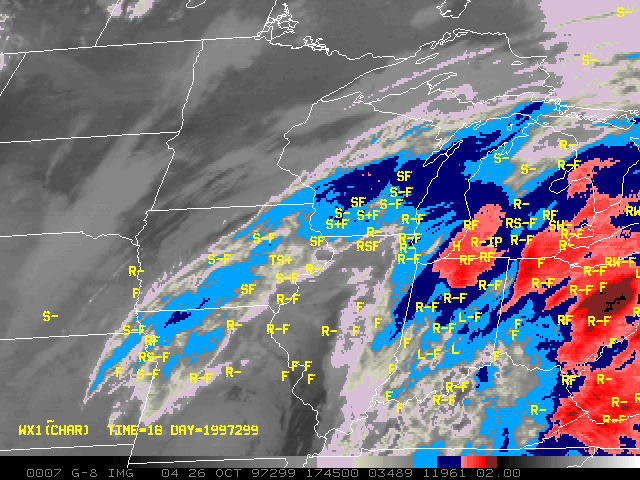
26 Oct GOES-8 IR (DD curve) |
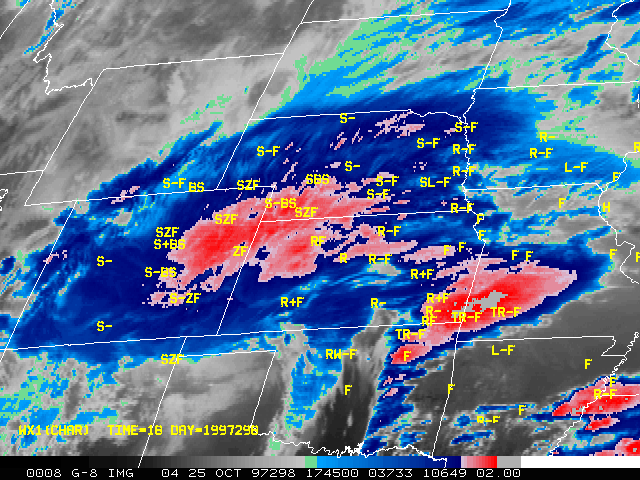
25 Oct GOES-8 IR (EC curve) |

26 Oct GOES-8 IR (EC curve) |
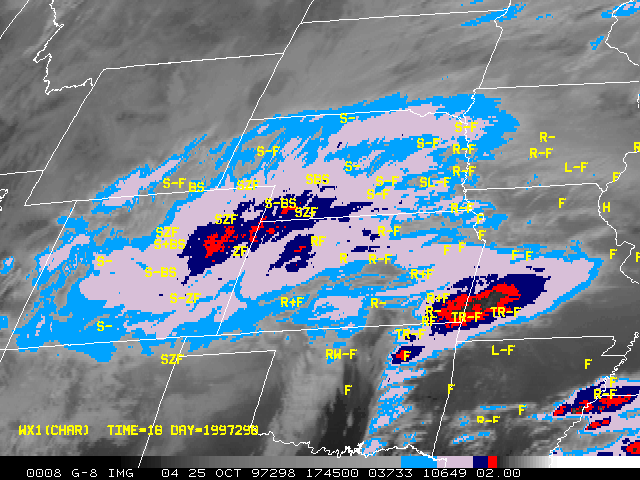
25 Oct GOES-8 IR (MB curve) |
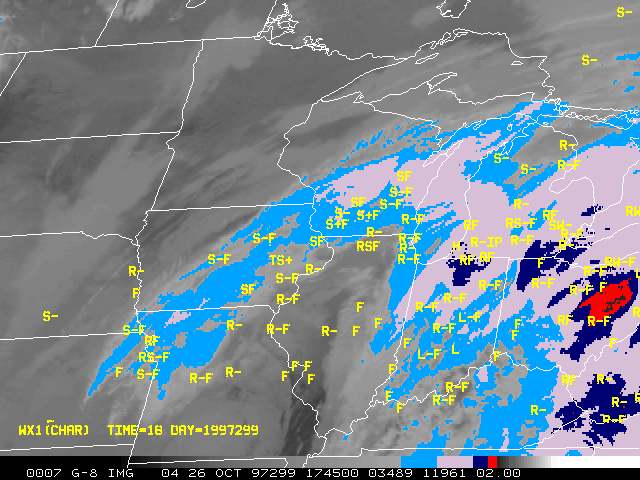
26 Oct GOES-8 IR (MB curve) |